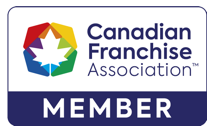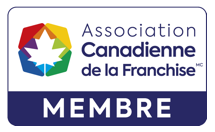This article is the fifth in a series of articles discussing the available Orders for Assistance under Rule 74.15 of the Rules of Civil Procedure (the “Rules”) and focuses on Orders relating to the disclosure of estate assets.
An Order to File a Statement of Assets of the Estate & an Order for Further Particulars
An Order to File a Statement of Assets of the Estate
Pursuant to rule 74.15(1)(d), a person may move for an Order requiring “an estate trustee to file with the court a statement of the nature and value, at the date of death, of each of the assets of the estate to be administered by the estate trustee.”[1]
This type of Order enables a person to obtain information concerning the nature and value of the assets of the estate which would otherwise not be available on a review of the Application for Certificate of Appointment of Estate Trustee. That said, if an Estate Information Return (“EIR”) is filed in a timely manner, additional information concerning the assets of the estate will be available to the interested party within 90 days following the issuance of the Certificate of Appointment of Estate Trustee.[2]
A motion for an Order to File a Statement of Assets may not be brought unless an Application for Certificate of Appointment of Estate Trustee has been commenced, though the Certificate need not be issued prior to moving for this Order.[3]
Where a beneficiary is seeking basic information concerning the nature and value of the assets of the Estate within a fairly short timeframe, an order under 74.15(1)(d) may be an efficient means to obtain this information.
But what happens if the Statement of Assets filed by the estate trustee is either incomplete or insufficient? An appropriate next step to consider when acting for a beneficiary would be to seek an Order for further particulars.
An Order for Further Particulars
Pursuant to rule 74.15(1)(e), a motion for an Order for Further Particulars concerning the assets of the estate may be brought following the filing of a Statement of Assets by the estate trustee.[4]
As noted above, a motion for an Order for Further Particulars would be appropriate where the Statement of Assets filed by the estate trustee is either incomplete or insufficient and where the value of the discrepancy and/or amount of the disputed items is insufficient to warrant a formal passing of accounts, or where the provision of further particulars would be sufficient to satisfy the concerns.
A motion brought pursuant to rule 74.15(1)(e), must be made on notice to the estate trustee.[5]
Rule 74.15 provides useful tools for individuals requiring assistance with respect to issues that arise in estate administration. For more information on how to obtain an Order for Assistance, please contact David A.S. Mills or Lauren A. Kason.
For previous posts in this series, see the links below:
Part One: Who is permitted to bring a motion under Rule 74.15?
Part Two: The procedure for obtaining an Order for Assistance and the associated notice requirements.
Part Three: The orders that can be obtained under section 9 of the Estates Act, with respect to the production of, or examinations related to, testamentary documents.
Part Four: The orders relating to the appointment of estate trustees.
[1] Rule 74.15(1)(d)
[2] Estate Administration Tax Act, 1998
[3] Helou v Hallet 2006 CarswellOnt 2519, [2006] O.J. No. 1718, 148 A.C.W.S. (3d) 38, 24 E.T.R. (3d) 88 at paras 38 and 41
[4] Rule 74.15(1)(e)
[5] Rule 74.15(3).

 2 St Clair Ave West
2 St Clair Ave West


